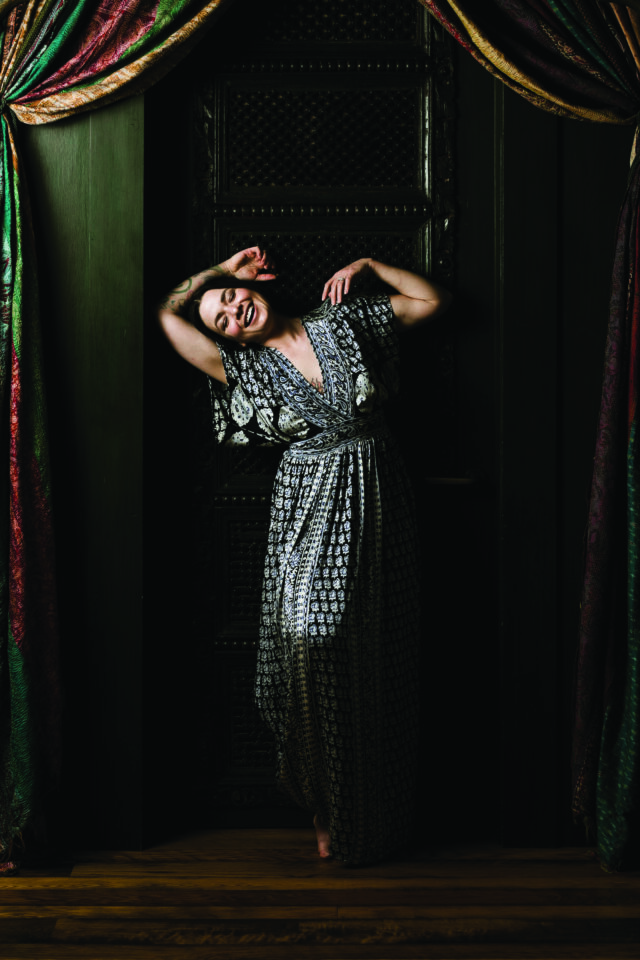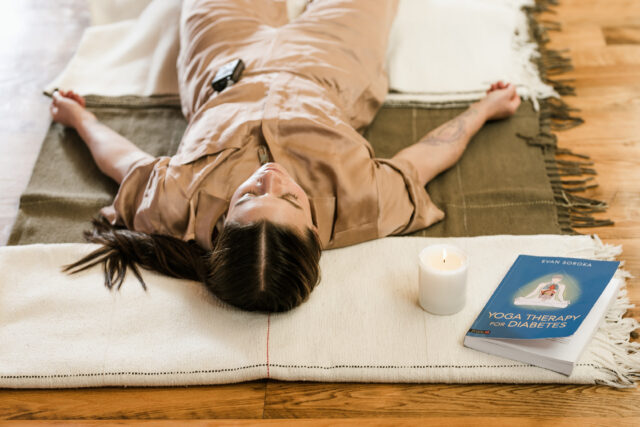
Picture yourself on a road trip through a vast and spectacular desert landscape. Red rocks, giant spires and the epic, open, blue desert sky highlight your pristine view. Then grime splatters on your windshield and you cannot see the view as well as you once could. Despite your efforts to spray washer fluid, the windshield remains streaky. The scenery outside becomes more obstructed, and eventually you forget what a clear view even was.
Living with diabetes is a lot like driving on that same road, but through a blizzard. There are no breaks, and even when it stops snowing, there’s still mud on the ground to splash your windshield.
Yoga practice clears the windshield of the mind, so you can see from a different vantage point. Yoga is a spiritual path with an overarching goal of liberation from the ego and freedom from suffering. The tools of yoga therapy are the same as the tools of yoga, but the distinction is that we use yoga therapy to address a specific condition. The precise application of the tools of yoga for diabetes is what makes it such a detailed art and science
In yoga therapy, we are modifying, adapting and even simplifying the traditional practices of yoga asana, pranayama and meditation to address the missing link in diabetes health care. The beauty of yoga therapy as self-care is that it empowers people to take charge of their lives, and also that it extends well beyond the treatment of diabetes. The main yoga therapy tools are asana, pranayama, chanting, guided relaxation (including savasana and the preparation for yoga nidra) and meditation.
Asana (physical yoga posture) helps to mobilize areas of tightness and strengthen areas of weakness. We learn in asana how to identify and adjust harmful movement patterns and replace them with more functional ones.
Pranayama is the expansion of life force as it flows within the body. It is the bridge between the mind and the physical body.

Bandha is a seal or lock, implying the containment of prana (breath or life force) within the body. In esoteric terms, bandhas are a way to collect impurities that stagnate in the lower region of the abdomen and push them into the fire of agni (purification) at the navel, so that prana can flow freely.
Chanting teaches a person how to exhale without tension. The origins of yoga were passed down audibly through chanting. It helps synchronize the left and right hemispheres of the brain, oxygenate the brain, improve heart rate variability, lower blood pressure and assist in reducing brain wave activity.
Yoga nidra is a state of being; it is not something you do. Yoga nidra teaches people how to remain aware and also relaxed at the same time. A big part of diabetes self-care is adaptability. Unless we are awake to diabetes, it is hard to be adaptive and present.
Meditation is about cultivating attention and sustaining that attention. Meditation also improves the ability to witness bodily signals and sensations associated with emotional states like anxiety and not get caught up in them.
Success with diabetes is about being open to your potential as your caretaker, and always discovering nuance in treatment strategies. Meditation shows people how to cultivate an inner state of equanimity while in the midst of chaos. It helps us shift from a self-centered “why is this happening to me?” attitude and be able to look at diabetes from a more objective vantage point. All of diabetes, and life, if you want to think of it like that, is a meditation.
us.singingdragon.com; find out more about yoga therapy classes at sorokayogatherapy.com







